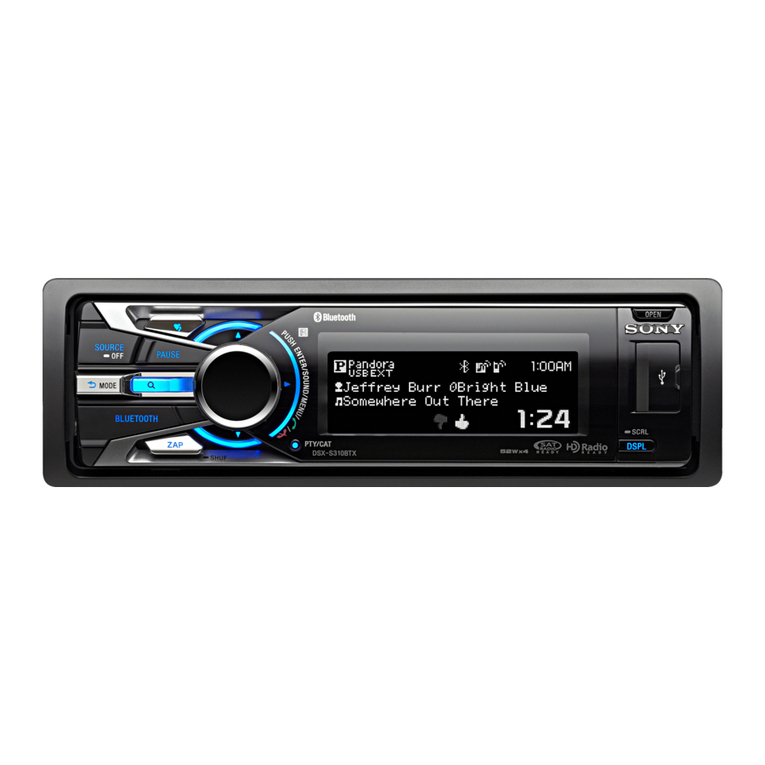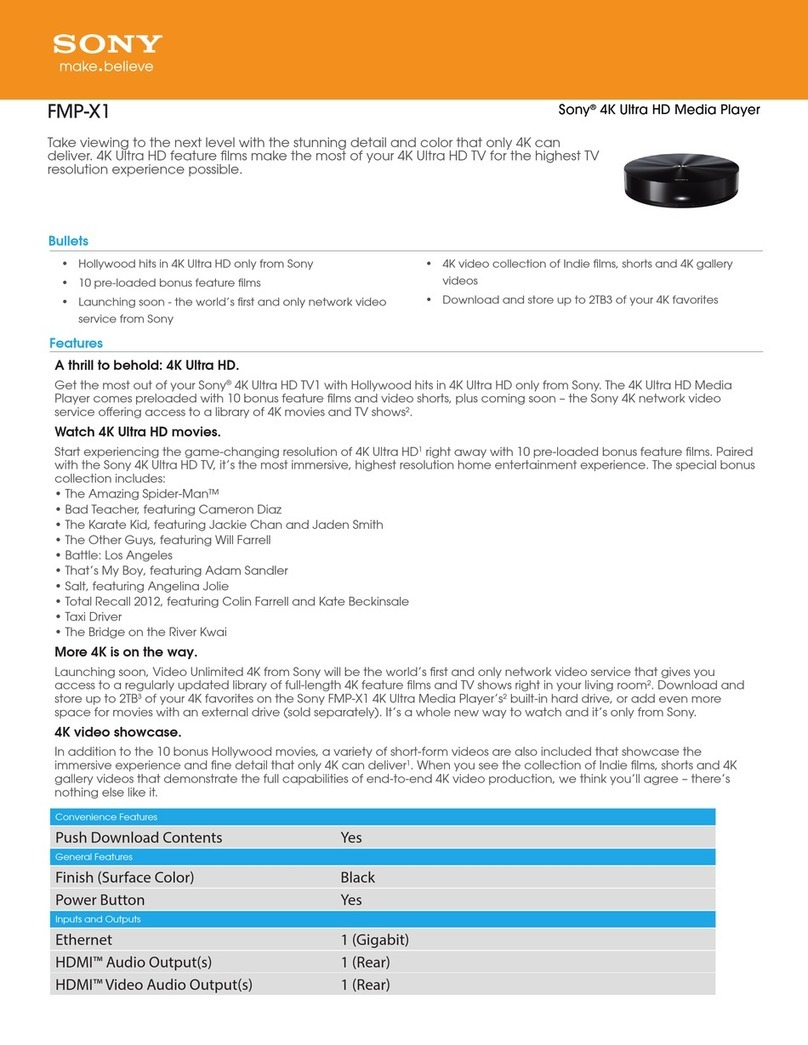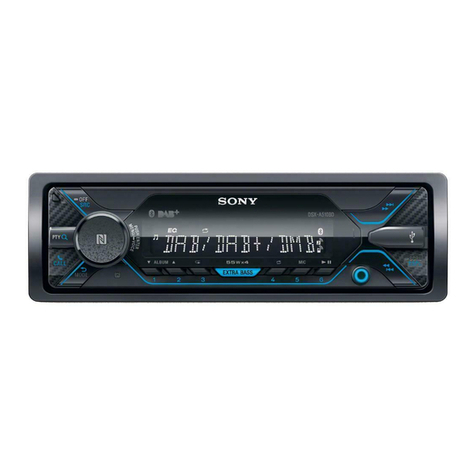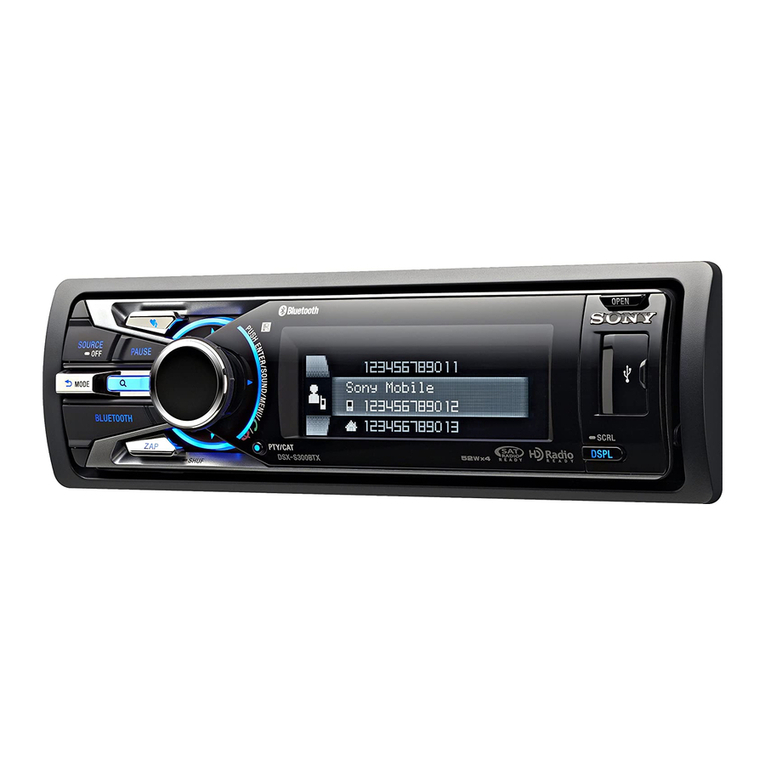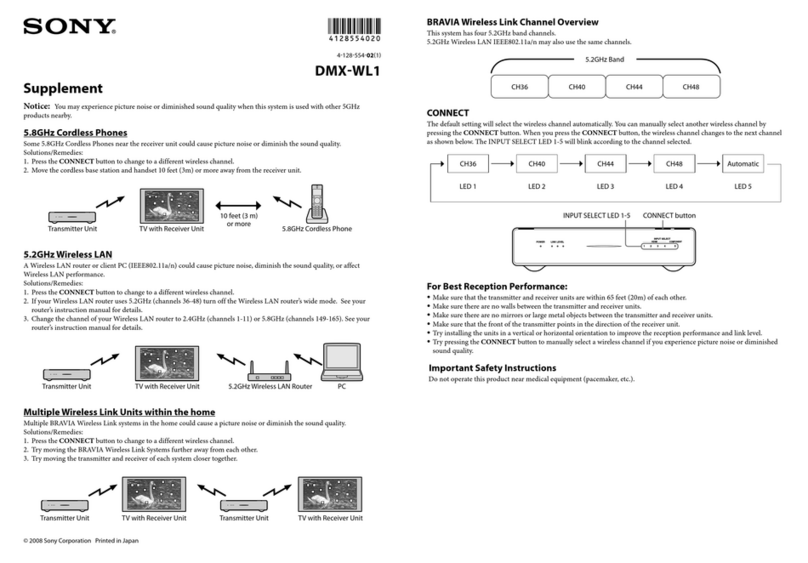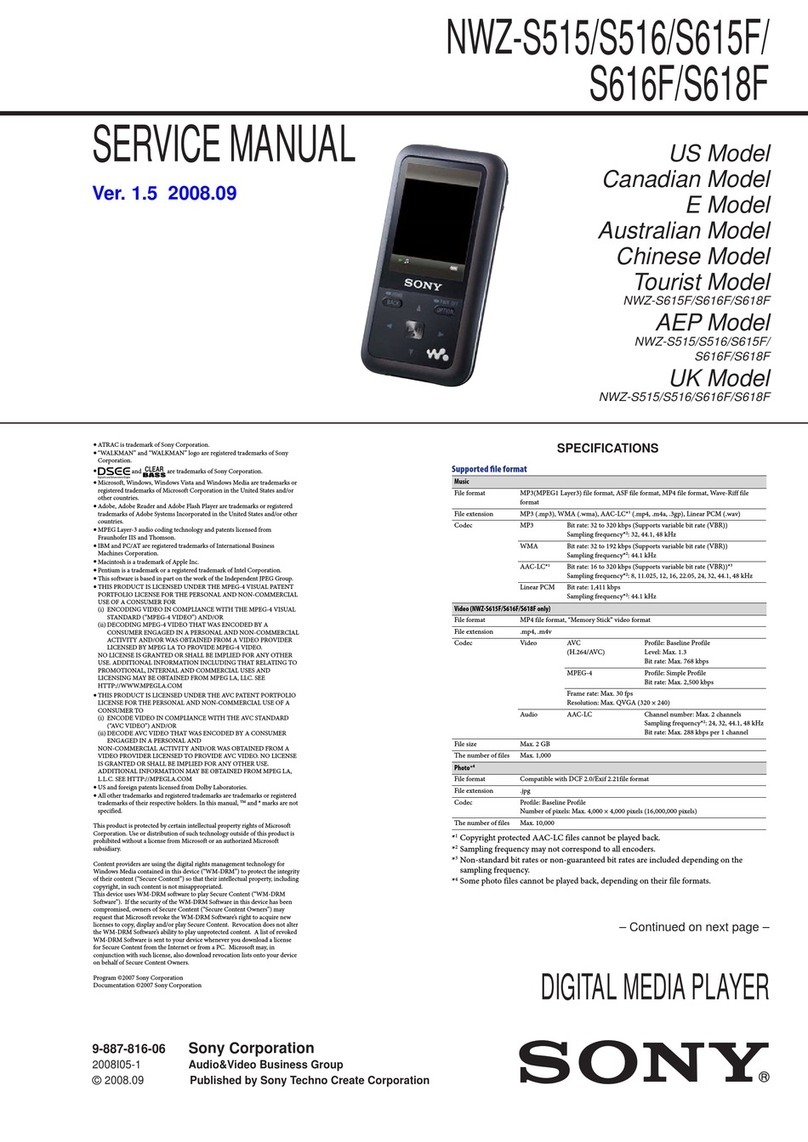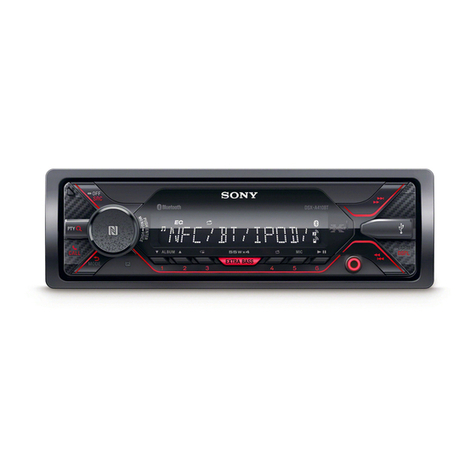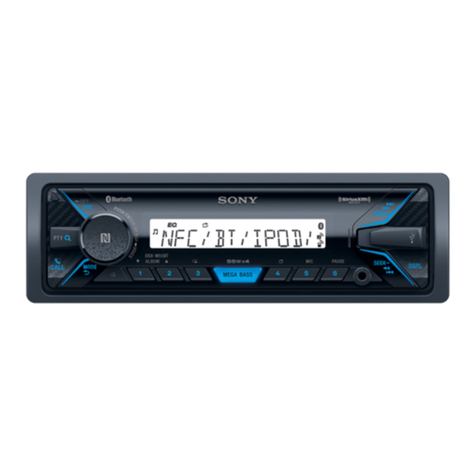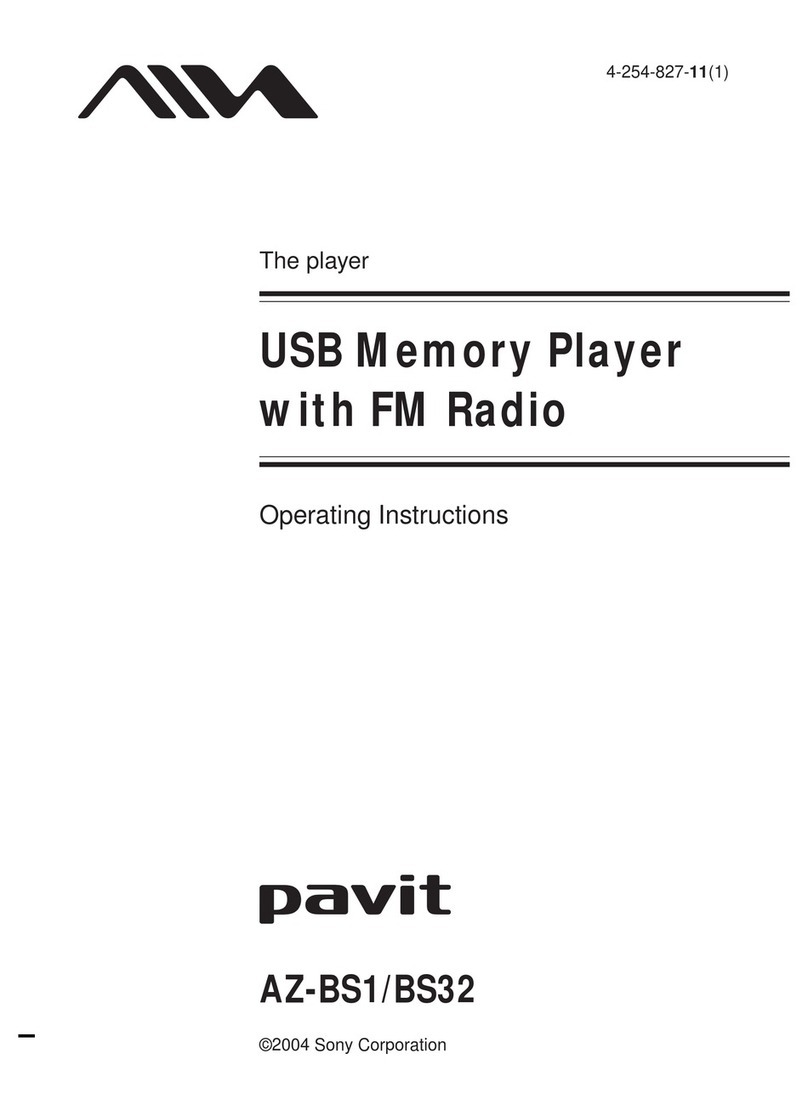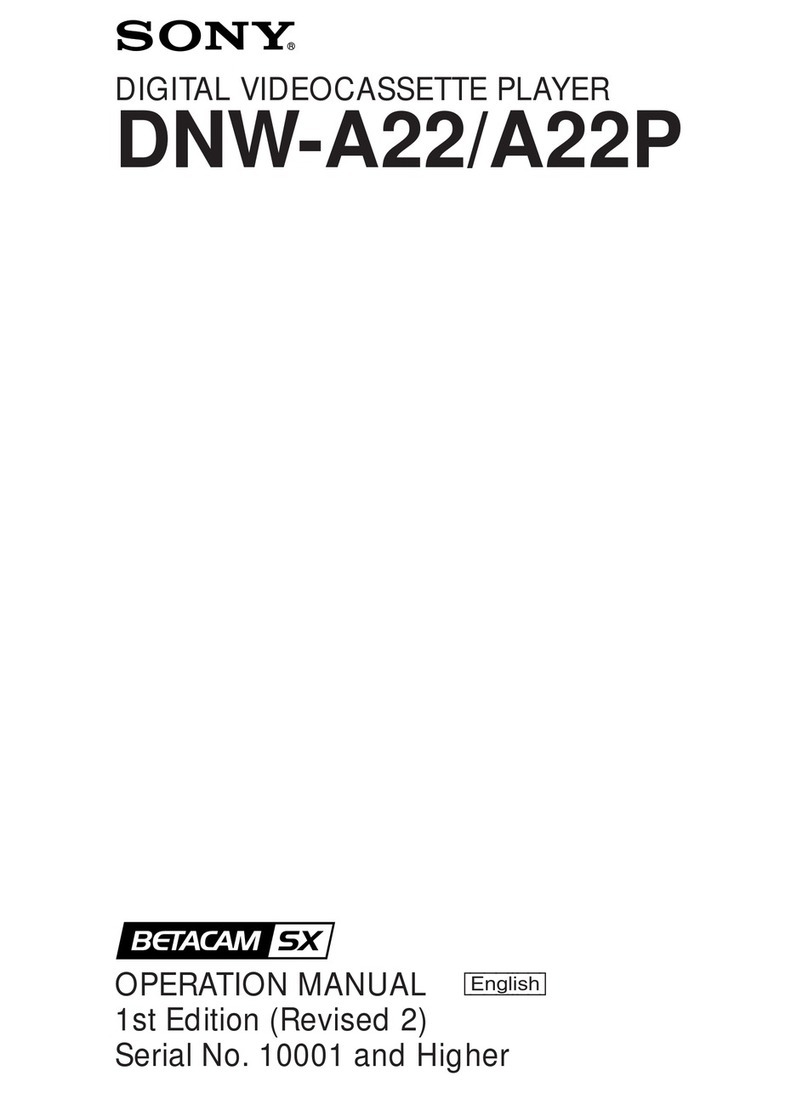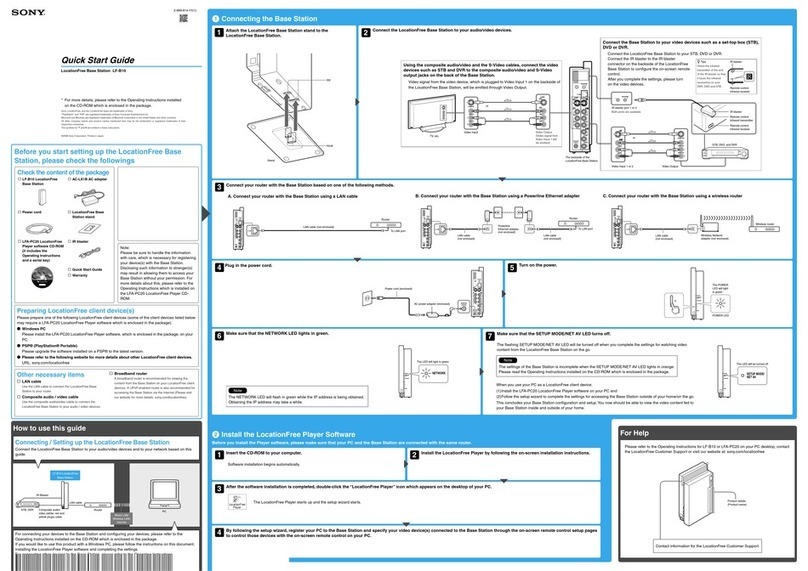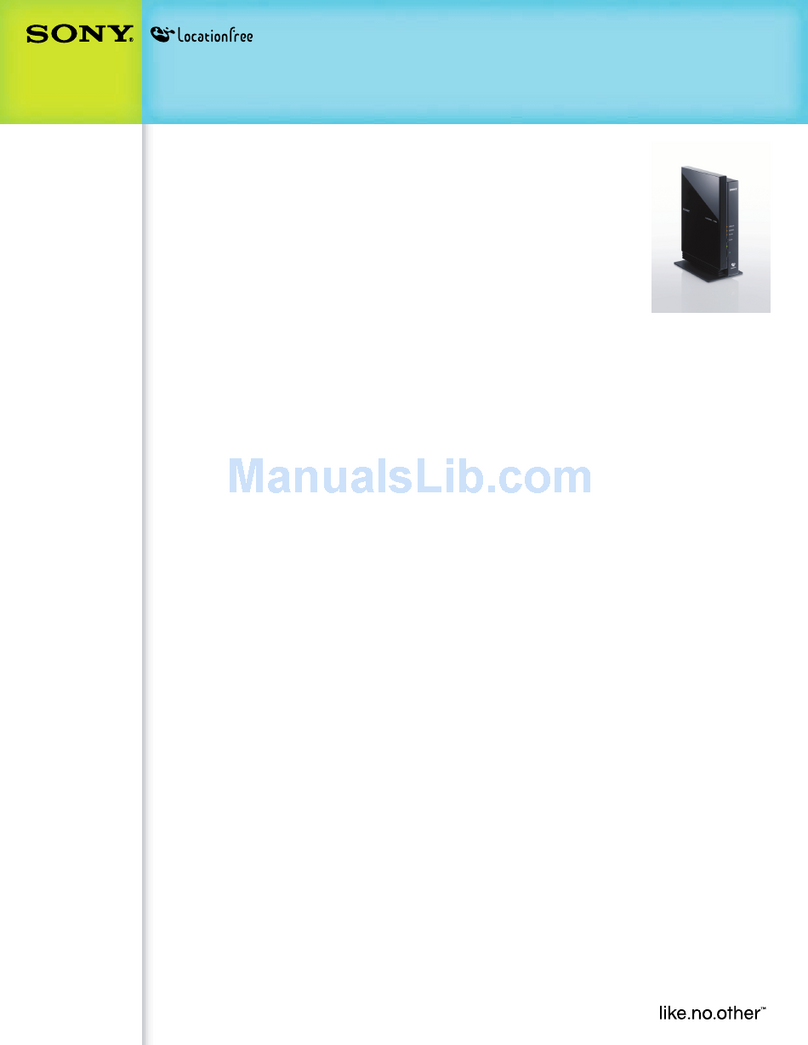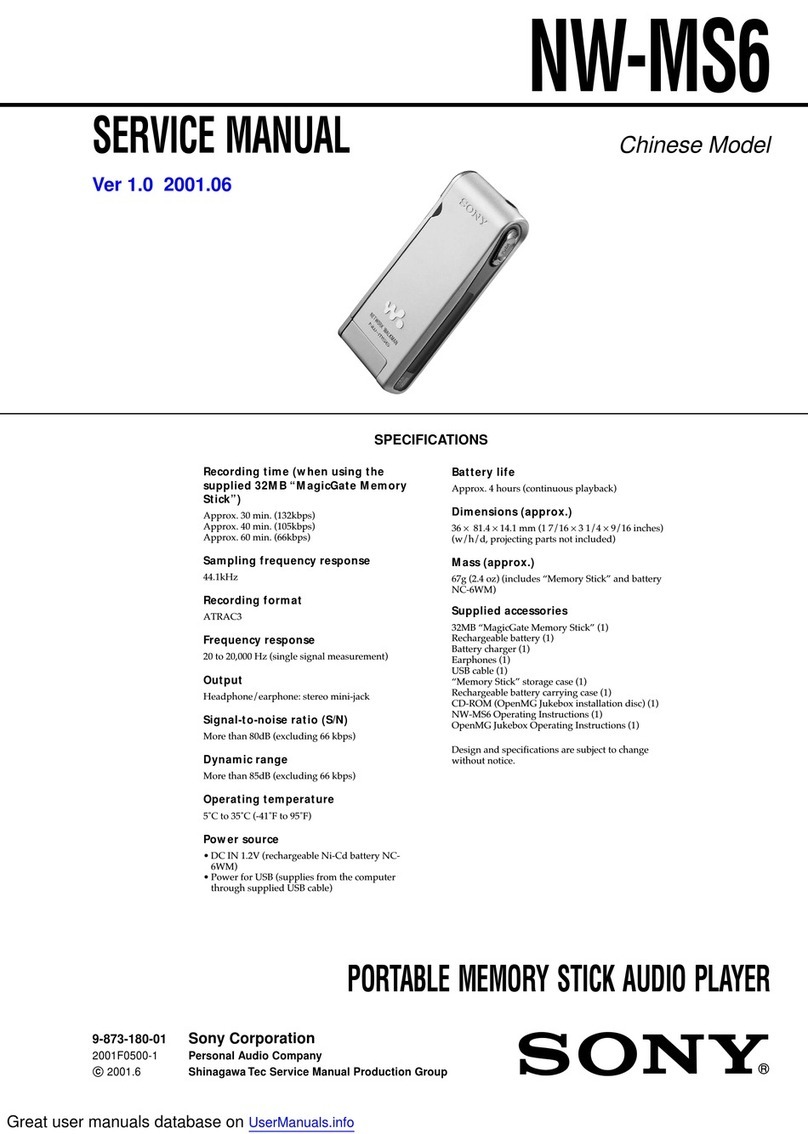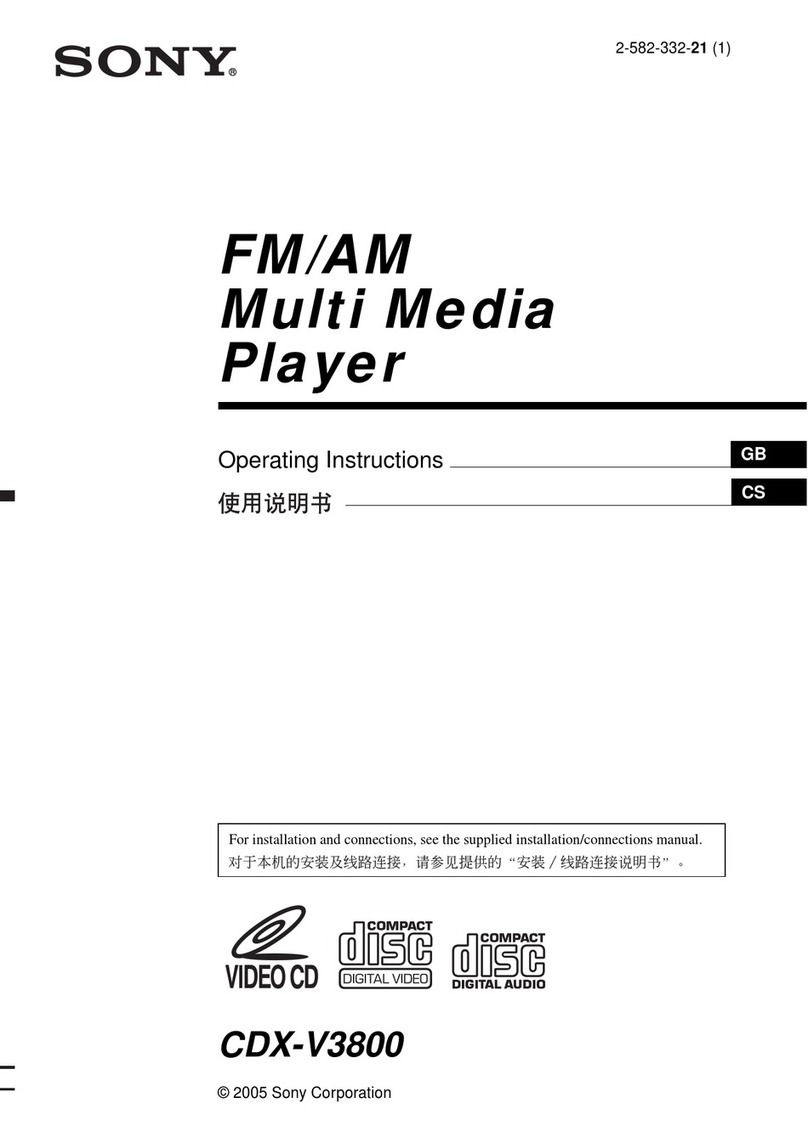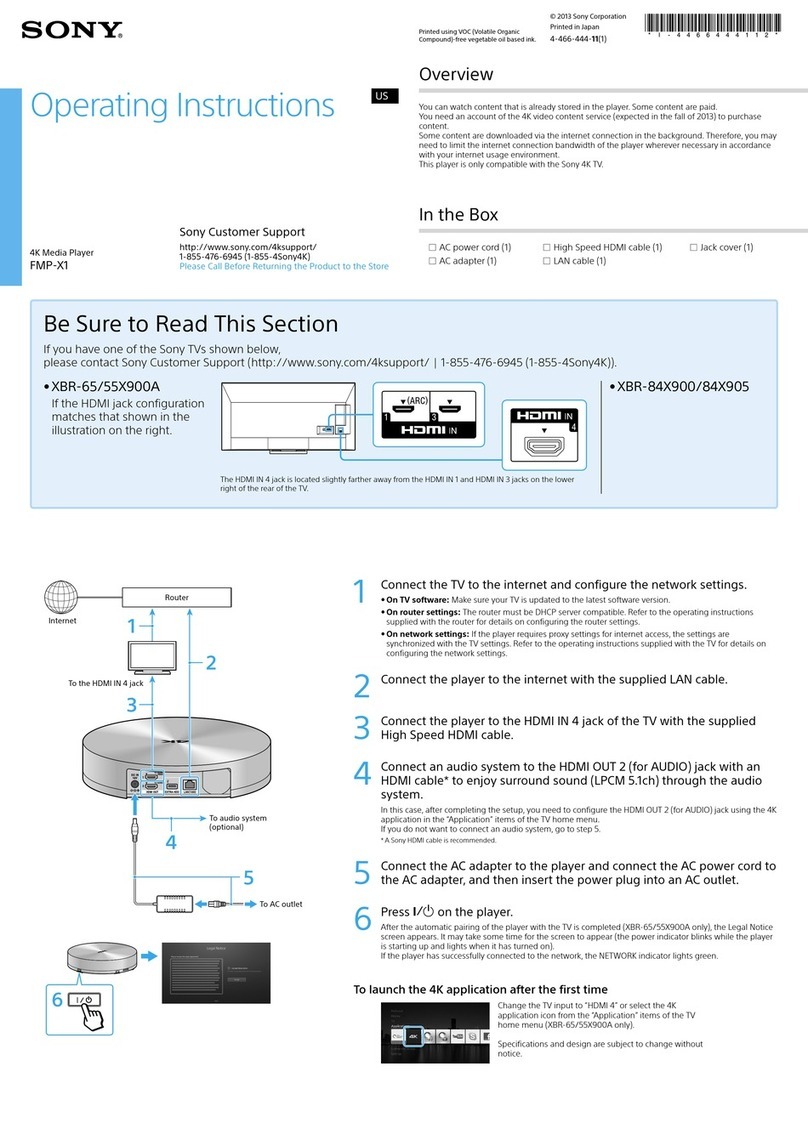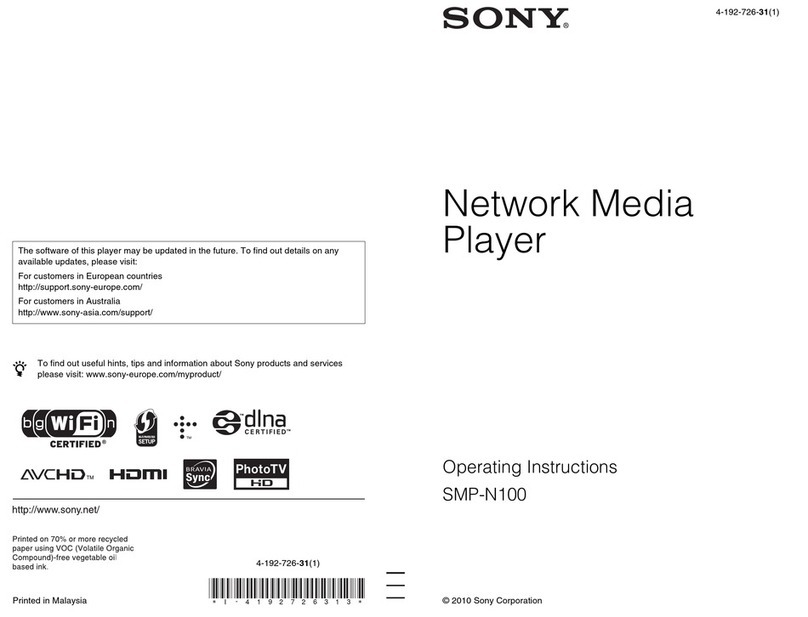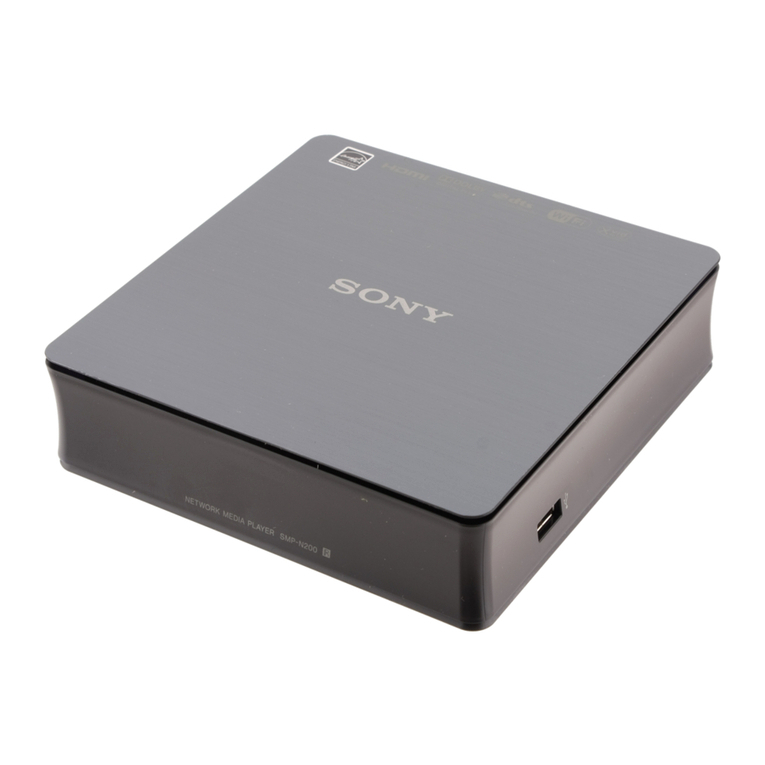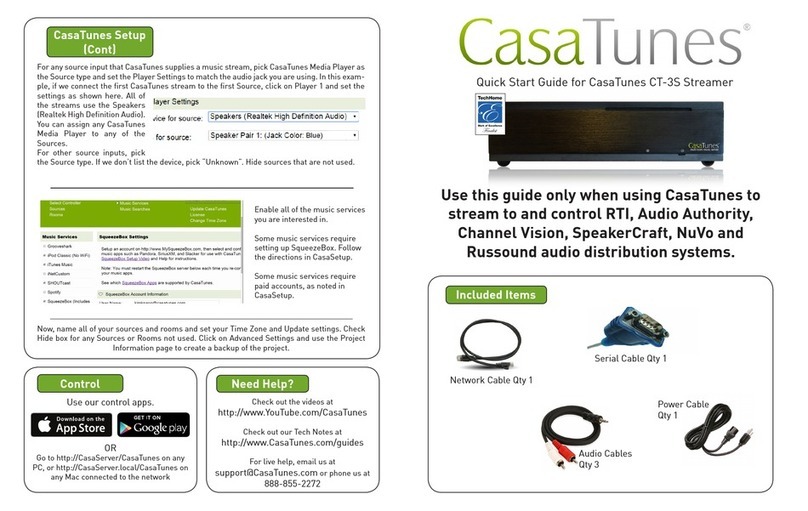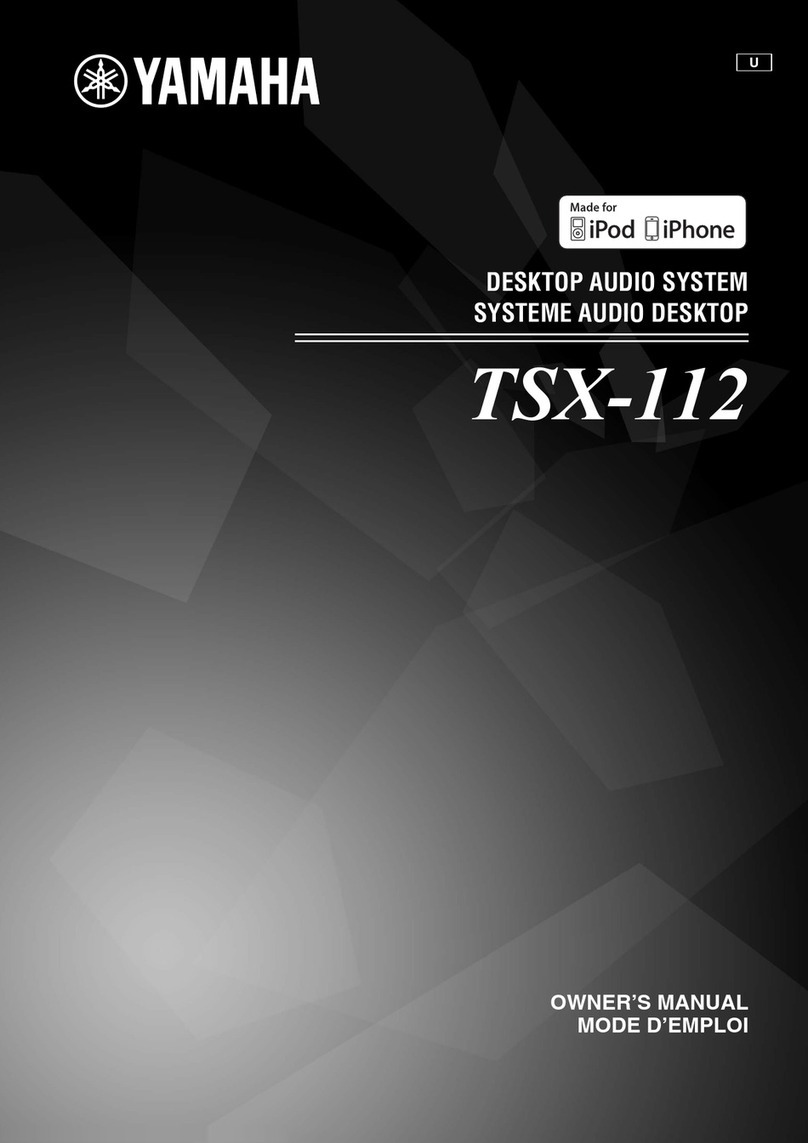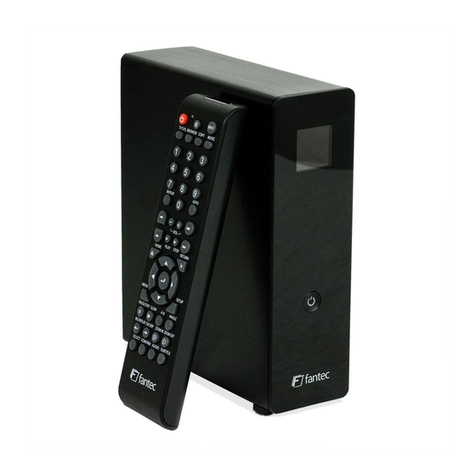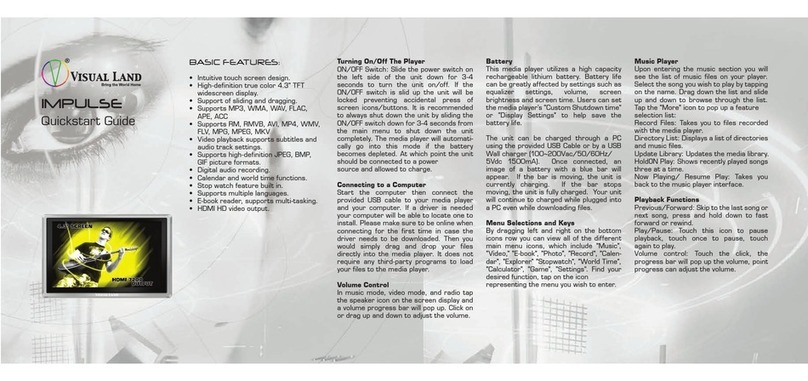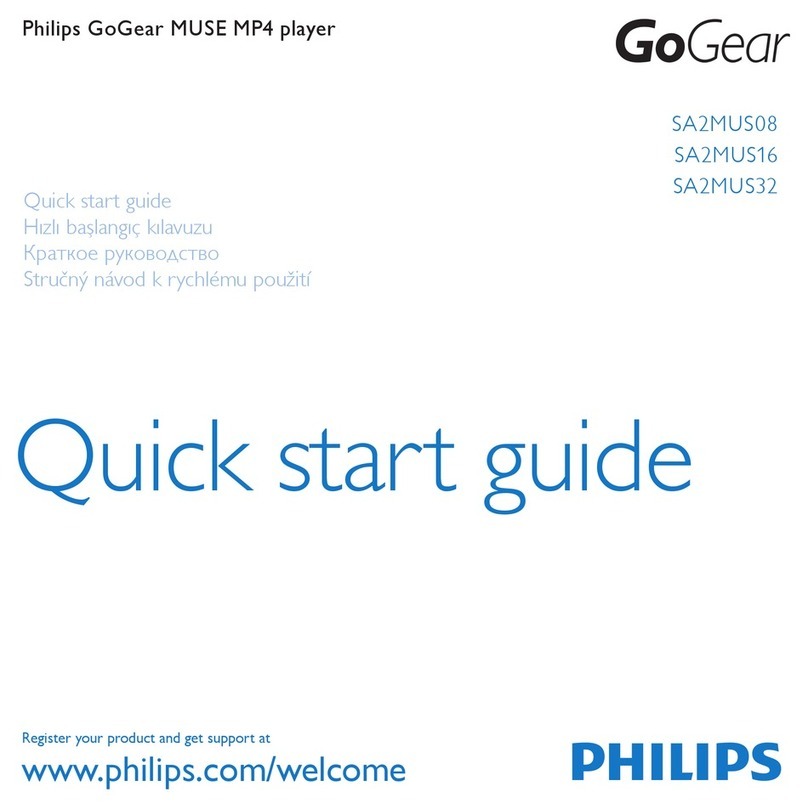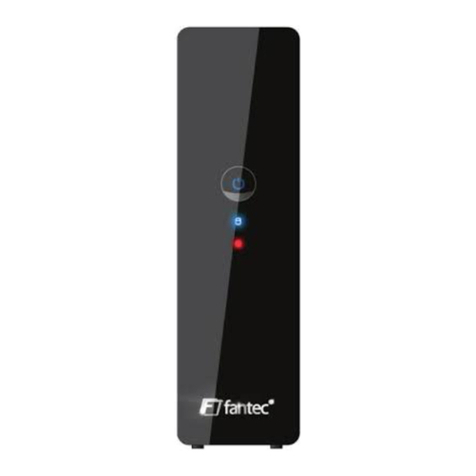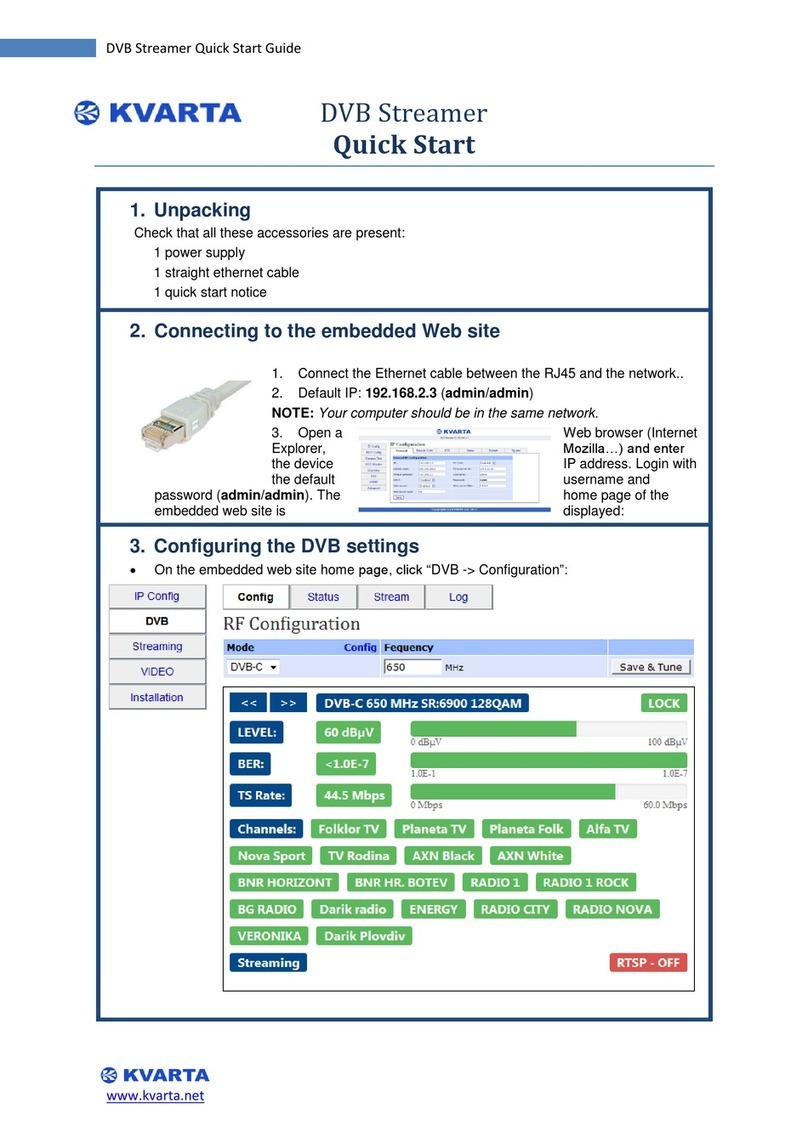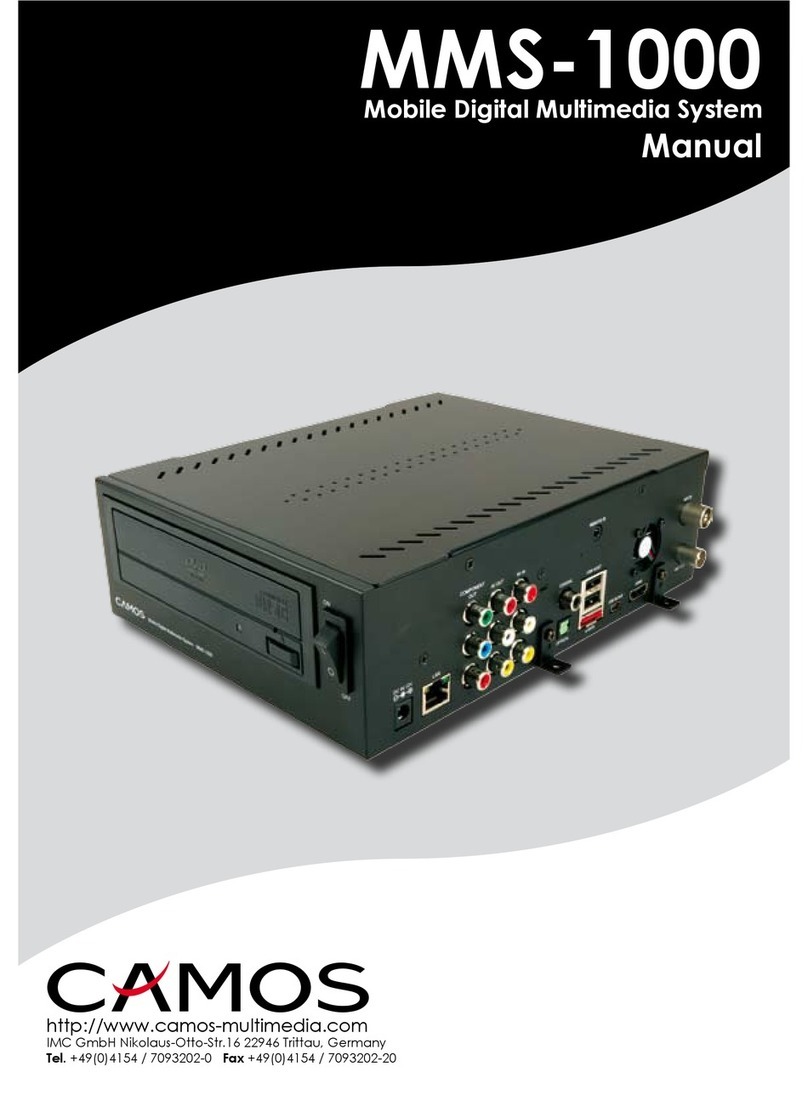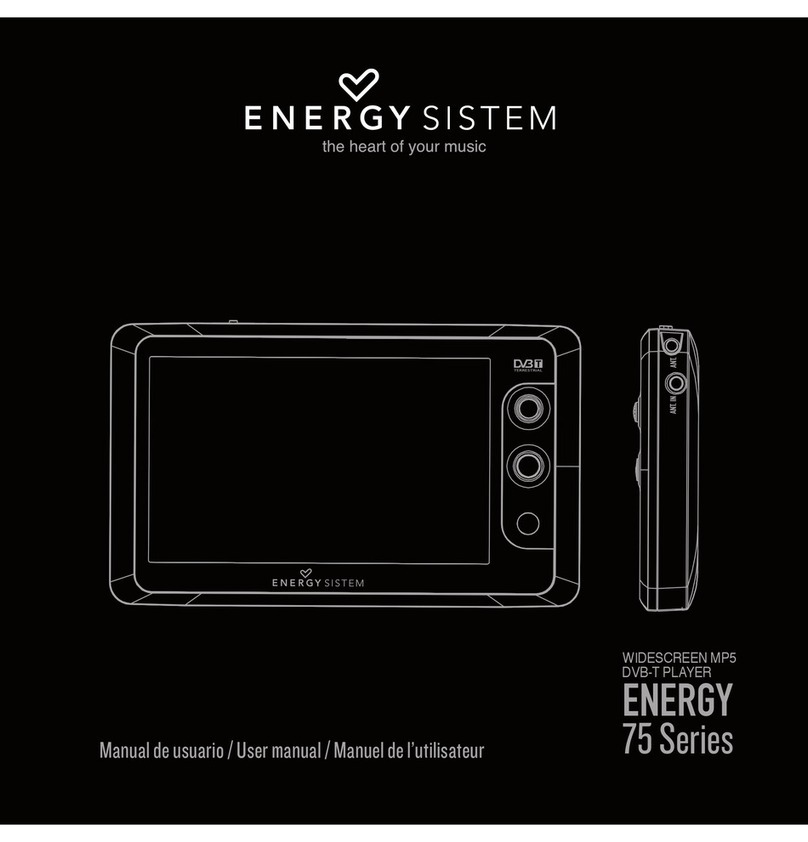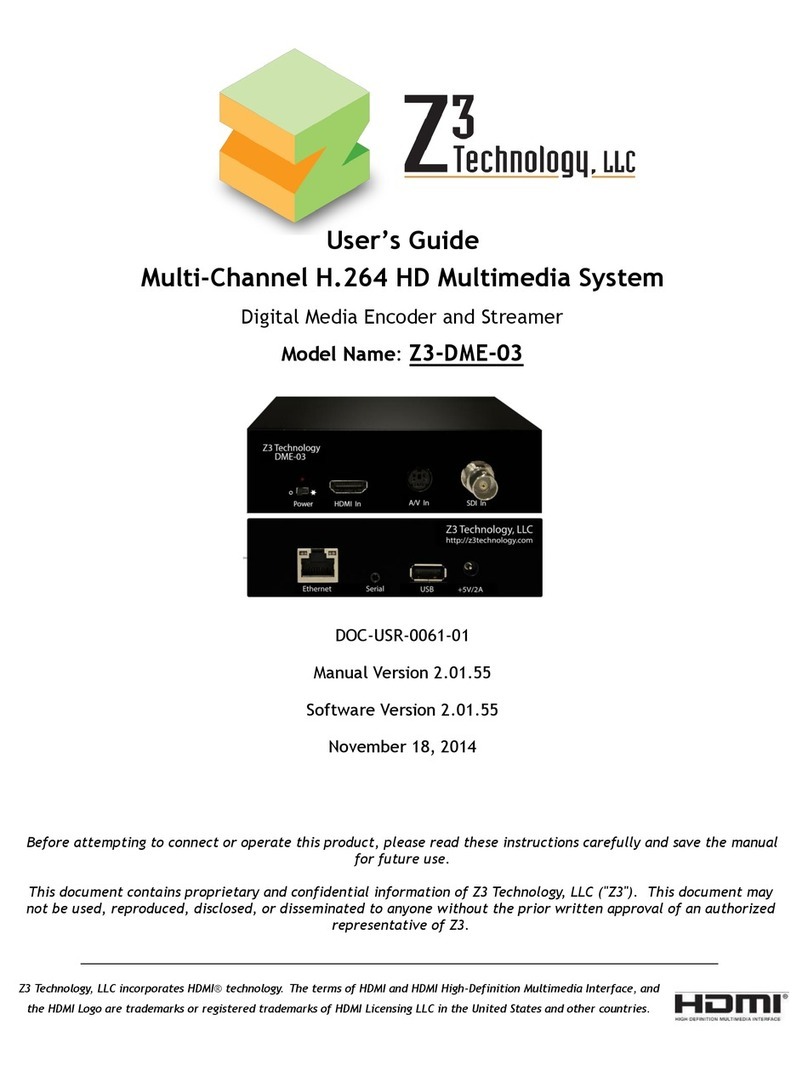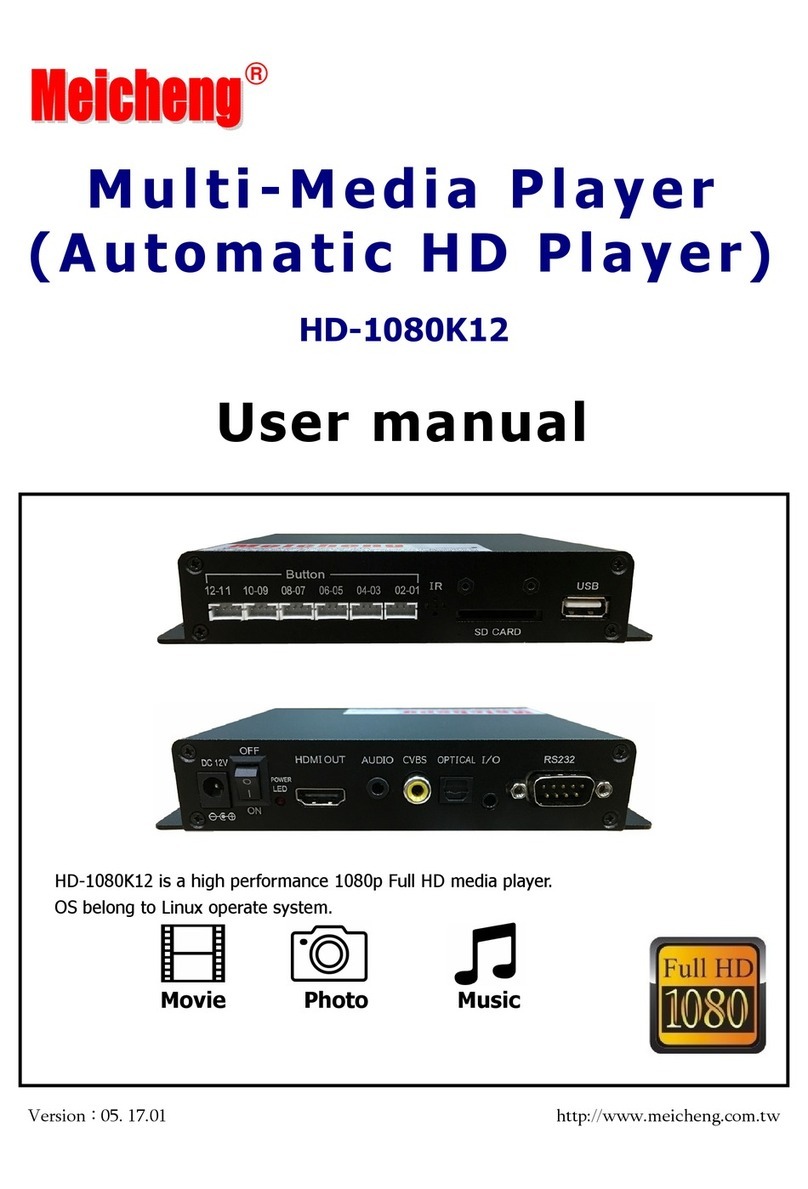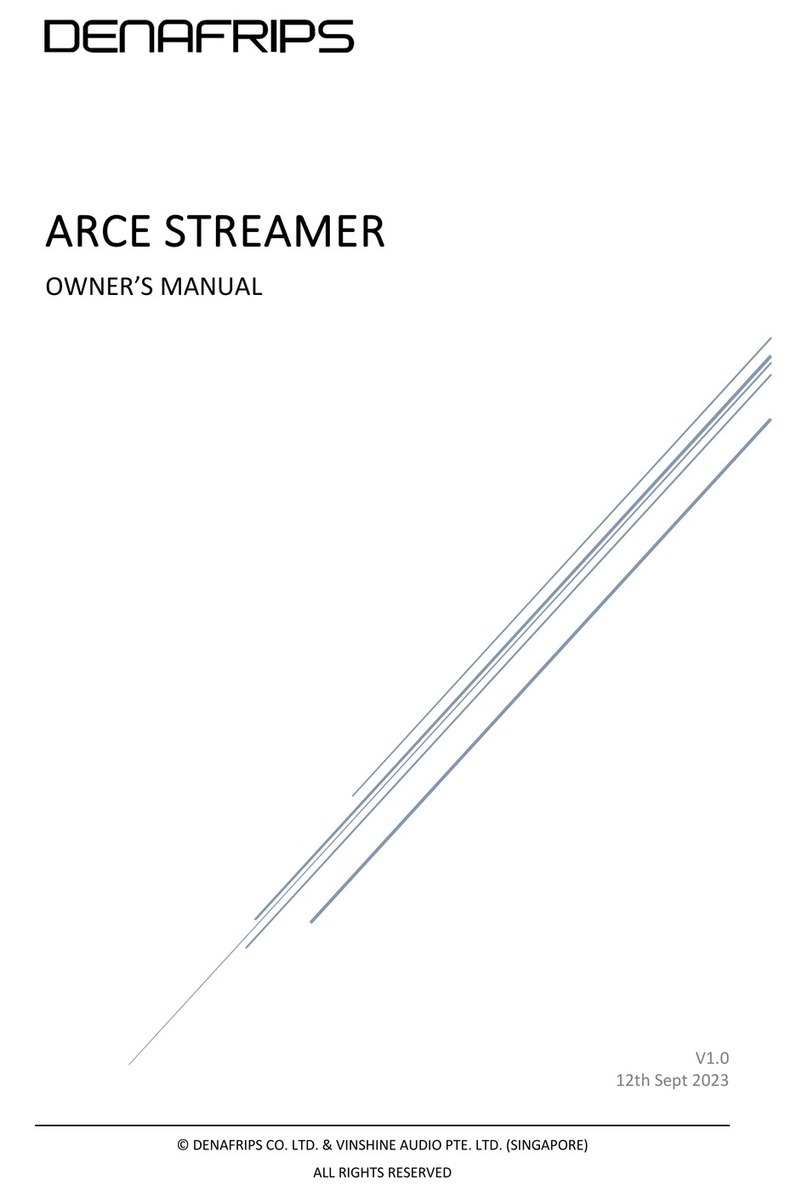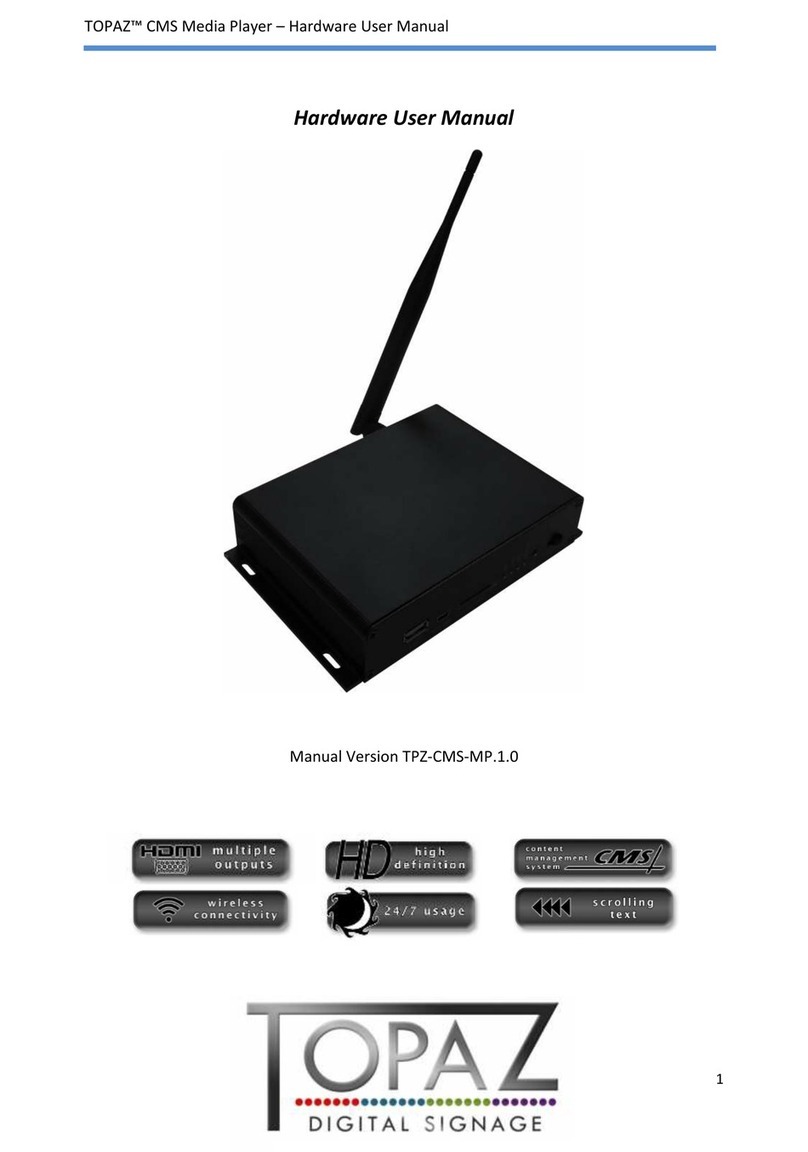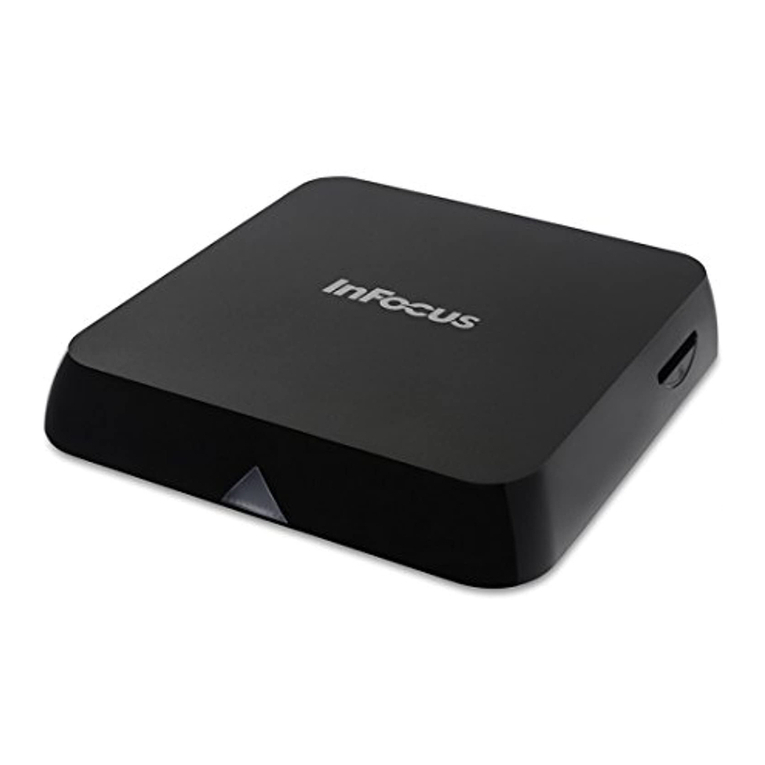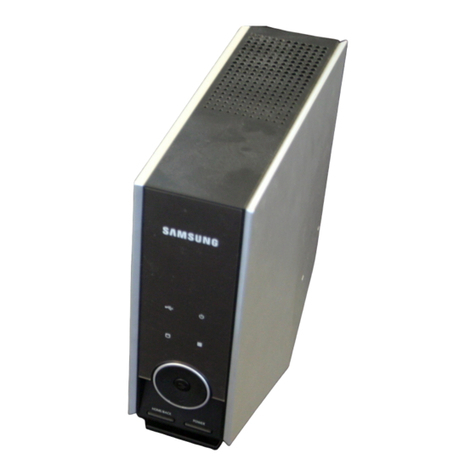
4-286-014-11(1)
FM/AM
Digital Media Player
Installation/Connections
Instalación/Conexiones
DSX-S210X
×2
×4
Equipment used in illustrations (not supplied)
Equipo utilizado en las ilustraciones (no suministrado)
Rear speaker
Altavoz posterior
Power amplifier
Amplificador de potencia
Subwoofer
Altavoz potenciador de graves
Front speaker
Altavoz frontal
A
B
FRONT
AUDIO OUT
REAR
AUDIO OUT
SUB OUT (MONO)
Cautions
This unit is designed for negative ground (earth) 12 V
DC operation only.
Do not get the leads under a screw, or caught in moving
parts (e.g. seat railing).
Before making connections, turn the car ignition off to
avoid short circuits.
Connect the yellow and red power supply leads only
after all other leads have been connected.
Run all ground (earth) leads to a common ground
(earth) point.
Be sure to insulate any loose unconnected leads with
electrical tape for safety.
The use of optical instruments with this product will
increase eye hazard.
Notes on the power supply lead (yellow)
When connecting this unit in combination with other
stereo components, the connected car circuit’s rating
must be higher than the sum of each component’s fuse.
When no car circuits are rated high enough, connect
the unit directly to the battery.
Parts Iist
The numbers in the list are keyed to those in the
instructions.
The bracket and the protection collar are
attached to the unit before shipping. Before mounting
the unit, use the release keys to remove the bracket
from the unit. For details, see “Removing the
protection collar and the bracket ()” on the reverse
side of the sheet.
Keep the release keys for future use as they are
also necessary if you remove the unit from your
car.
Caution
Handle the bracket carefully to avoid injuring your
fingers.
Catch
Note
Before installing, make sure that the catches on both sides of the bracket
are bent inwards 2 mm (3/32 in). If the catches are straight or bent
outwards, the unit will not be installed securely and may spring out.
Connection example
Notes (-A)
Be sure to connect the ground (earth) lead before connecting the
amplifier.
The alarm will only sound if the built-in amplifier is used.
Notes on satellite radio tuner (-B)
This unit does not support the XM radio tuner
XMDSON100.
Connection diagram
To a metal surface of the car
First connect the black ground (earth) lead, then connect the yellow
and red power supply leads.
To the power antenna (aerial) control lead or
power supply lead of antenna (aerial) booster
Notes
It is not necessary to connect this lead if there is no power
antenna (aerial) or antenna (aerial) booster, or with a
manually-operated telescopic antenna (aerial).
When your car has a built-in FM/AM antenna (aerial) in the rear/
side glass, see “Notes on the control and power supply leads.”
To AMP REMOTE IN of an optional power
amplifier
This connection is only for amplifiers. Connecting any other system
may damage the unit.
To the interface cable of a car telephone
To a car’s illumination signal
Be sure to connect the black ground (earth) lead to a metal surface
of the car first.
To the +12 V power terminal which is energized
in the accessory position of the ignition switch
Notes
If there is no accessory position, connect to the +12 V power
(battery) terminal which is energized at all times.
Be sure to connect the black ground (earth) lead to a metal
surface of the car first.
When your car has a built-in FM/AM antenna (aerial) in the rear/
side glass, see “Notes on the control and power supply leads.”
To the +12 V power terminal which is energized
at all times
Be sure to connect the black ground (earth) lead to a metal surface
of the car first.
Notes on the control and power supply leads
The power antenna (aerial) control lead (blue) supplies +12 V DC when
you turn on the tuner.
When your car has built-in FM/AM antenna (aerial) in the rear/side glass,
connect the power antenna (aerial) control lead (blue) or the accessory
power supply lead (red) to the power terminal of the existing antenna
(aerial) booster. For details, consult your dealer.
A power antenna (aerial) without a relay box cannot be used with this
unit.
Memory hold connection
When the yellow power supply lead is connected, power will always be
supplied to the memory circuit even when the ignition switch is turned
off.
Notes on speaker connection
Before connecting the speakers, turn the unit off.
Use speakers with an impedance of 4 to 8 ohms, and with adequate
power handling capacities to avoid its damage.
Do not connect the speaker terminals to the car chassis, or connect the
terminals of the right speakers with those of the left speaker.
Do not connect the ground (earth) lead of this unit to the negative (–)
terminal of the speaker.
Do not attempt to connect the speakers in parallel.
Connect only passive speakers. Connecting active speakers (with built-in
amplifiers) to the speaker terminals may damage the unit.
To avoid a malfunction, do not use the built-in speaker leads installed
in your car if the unit shares a common negative (–) lead for the right
and left speakers.
Do not connect the unit’s speaker leads to each other.
Note on connection
If speaker and amplifier are not connected correctly, “Failure” appears in
the display. In this case, make sure the speaker and amplifier are
connected correctly.
BUS
CONTROL IN
REMOTE
IN*4
FRONT
AUDIO OUT
REAR
AUDIO OUT
BUS AUDIO IN
SUB OUT (MONO)
AMP REM
Max. supply current 0.3 A
Corriente máx. de alimentación de 0,3 A
Fuse (10 A)
Fusible (10 A)
Blue/white striped
Con rayas azules y blancas
White
Blanco
Green
Verde
Purple
Morado
White/black striped
Con rayas blancas y negras
Gray/black striped
Con rayas grises y negras
Green/black striped
Con rayas verdes y negras
Gray
Gris
Left
Izquierdo
Right
Derecho
Left
Izquierdo
Right
Derecho
Purple/black striped
Con rayas moradas y negras
*1
Satellite radio tuner
(
XM/SIRIUS
)*3
Sintonizador de radio por satélite
(
XM/SIRIUS
)*3
from car antenna (aerial)
desde la antena del automóvil
*1RCA pin cord (not supplied).
*2BUS cable (not supplied).
*3not supplied.
*4Separate adaptor may be required.
*1 Cable con terminales RCA (no suministrado).
*2 Cable de BUS (no suministrado).
*3 no suministrado.
*4 Puede requerirse un adaptador independiente.
*1
ANT REM
Max. supply current 0.1 A
Corriente máx. de alimentación de 0,1 A
ILLUMINATION
ATT
Red
Rojo
Yellow
Amarillo
Black
Negro
Blue
Azul
Light blue
Azul celeste
Orange/white striped
Con rayas naranjas y blancas
*2
BUS AUDIO IN
BUS CONTROL IN
Satellite radio tuner
(XM/SIRIUS)*
Sintonizador de radio por satélite
(XM/SIRIUS)*
*not supplied
no suministrado
Precauciones
Esta unidad ha sido diseñada para alimentarse sólo con
cc de 12 V de masa negativa.
No coloque los cables debajo de ningún tornillo, ni los
aprisione con partes móviles (p. ej. los raíles del asiento).
Antes de realizar las conexiones, apague el automóvil
para evitar cortocircuitos.
Conecte los cables de fuente de alimentación amarillo
y rojo solamente después de haber conectado los
demás.
Conecte todos los cables de conexión a masa a un
punto común.
Por razones de seguridad, asegúrese de aislar con cinta
aislante los cables sueltos que no estén conectados.
El uso de instrumentos ópticos con este producto
aumenta el riesgo de sufrir daños oculares.
Notas sobre el cable de fuente de alimentación
(amarillo)
Cuando conecte esta unidad en combinación con otros
componentes estéreo, la capacidad nominal del circuito
conectado del automóvil debe ser superior a la suma del
fusible de cada componente.
Si no hay circuitos del automóvil con capacidad
nominal suficientemente alta, conecte la unidad
directamente a la batería.
Lista de componentes
Los números de la lista corresponden a los de las
instrucciones.
La unidad se comercializa con el soporte y el marco
de protección ya colocados. Antes de montarla,
utilice las llaves de liberación para extraer el soporte
de esta. Para obtener más información, consulte
“Extracción del marco de protección y del soporte
() ”.
Conserve las llaves de liberación para
utilizarlas en el futuro, ya que también las
necesitará si retira la unidad del automóvil.
Precaución
Tenga mucho cuidado al manipular el soporte para
evitar posibles lesiones en los dedos.
Enganche
Nota
Antes de instalar la unidad, compruebe que los enganches de ambos
lados del soporte están doblados hacia adentro 2 mm. Si no lo están
o están doblados hacia afuera, la unidad no se instalará correctamente
y puede saltar.
Ejemplo de conexiones
Notas (-A)
Asegúrese de conectar primero el cable de conexión a masa antes de
realizar la conexión del amplificador.
La alarma sonará únicamente si se utiliza el amplificador incorporado.
Notas sobre el sintonizador de radio por satélite
(-B)
Esta unidad no es compatible con el sintonizador de
radio XM XMDSON100.
Diagrama de conexión
A una superficie metálica del automóvil
Conecte primero el cable de conexión a masa negro, y después los
cables amarillo y rojo de fuente de alimentación.
Al cable de control de la antena motorizada o al
cable de fuente de alimentación del
amplificador de señal de la antena
Notas
Si no se dispone de antena motorizada ni de amplificador de
antena, o se utiliza una antena telescópica accionada
manualmente, no será necesario conectar este cable.
Si el automóvil incorpora una antena de FM/AM en el cristal
trasero o lateral, consulte “Notas sobre los cables de control y de
fuente de alimentación”.
A AMP REMOTE IN de un amplificador de
potencia opcional
Esta conexión es sólo para amplificadores. La conexión de cualquier
otro sistema puede dañar la unidad.
Al cable de interfaz de un teléfono para
automóvil
A una señal de iluminación del automóvil
Asegúrese de conectar primero el cable de conexión a masa negro a
una superficie metálica del automóvil.
Al terminal de alimentación de +12 V que recibe
energía en la posición de accesorio del
interruptor de encendido
Notas
Si no hay posición de accesorio, conéctelo al terminal de
alimentación (batería) de +12 V que recibe energía sin
interrupción.
Asegúrese de conectar primero el cable de conexión a masa
negro a una superficie metálica del automóvil.
Si el automóvil incorpora una antena de FM/AM en el cristal
trasero o lateral, consulte “Notas sobre los cables de control y de
fuente de alimentación”.
Al terminal de alimentación de +12 V que recibe
energía sin interrupción
Asegúrese de conectar primero el cable de conexión a masa negro a
una superficie metálica del automóvil.
Notas sobre los cables de control y de fuente de alimentación
El cable de control de la antena motorizada (azul) suministrará cc de
+12 V cuando conecte la alimentación del sintonizador.
Si el automóvil dispone de una antena de FM/AM incorporada en el
cristal trasero o lateral, conecte el cable de control de antena
motorizada (azul) o el cable de fuente de alimentación auxiliar (rojo)
al terminal de alimentación del amplificador de antena existente. Para
obtener más información, consulte a su distribuidor.
Con esta unidad no es posible utilizar una antena motorizada sin caja
de relé.
Conexión para protección de la memoria
Si conecta el cable de fuente de alimentación amarillo, el circuito de la
memoria recibirá siempre alimentación, aunque apague el interruptor
de encendido.
Notas sobre la conexión de los altavoces
Antes de conectar los altavoces, desconecte la alimentación de la
unidad.
Utilice altavoces con una impedancia de 4 a 8 Ω con la capacidad de
potencia adecuada para evitar que se dañen.
No conecte los terminales de altavoz al chasis del automóvil, ni
conecte los terminales del altavoz derecho con los del izquierdo.
No conecte el cable de conexión a masa de esta unidad al terminal
negativo (–) del altavoz.
No intente conectar los altavoces en paralelo.
Conecte solamente altavoces pasivos. Si conecta altavoces activos
(con amplificadores incorporados) a los terminales de altavoz, puede
dañar la unidad.
Para evitar fallas de funcionamiento, no utilice los cables de altavoz
incorporados instalados en el automóvil si la unidad comparte un
cable negativo común (–) para los altavoces derecho e izquierdo.
No conecte los cables de altavoz de la unidad entre sí.
Nota sobre la conexión
Si el altavoz y el amplificador no están conectados correctamente,
aparecerá “Failure” en la pantalla. Si es así, compruebe la conexión de
ambos dispositivos.
*1
